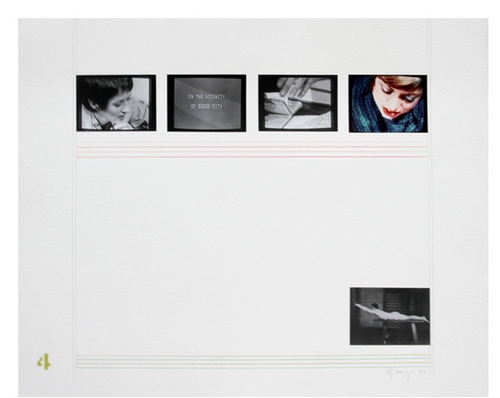by C.C.
The image of the French artist Marcel Duchamp (1887-1968) playing chess clearly reflects a decisive moment in art history. We are familiar with his famous urinal in Fountain (1917) that infuriated many and stirred up discussions and interpretations that changed the course of art history, bringing the focus of art onto its relationship with the mind, instead of the art that he considered to “please the eye”, such as the works by his contemporaries, Picasso and Matisse.
We know that Duchamp was playful with art, but we have not expected to see a body of work that plays with Duchamp.
The New York-based conceptual artist, writer, and historian Robert C. Morgan is showing a 14-year body of work (1974-1988) called “The Swimming Lesson, 1981 (translating Duchamp’s Green Box)” at the Rooster Gallery in Lower East Side Manhattan. The work was salvaged from the storage, and presented to viewers in New York for the first time after it had been shown at the Ulrich Museum in Wichita, Kansas in 1981.
The exhibition comprises of two parts. On the first floor we see a sequence of photo/collage drawings; based on a videotape of two women (Susan Crawshaw and Jan Mullen) translating selected fragments from Duchamp’s Green Box notes.
As one translator reads from the handwritten instructions aloud in French, taken directly from the 1934 facsimile edition, the transcriber struggles to comprehend the spoken phrases, writing them down in English. The drawings follow a structured order of codes showing the awkwardness of two people making a great effort to communicate and yet are somehow lost in translation, thus inevitably inviting the viewer to be part of a unique conceptual playfulness filled with irony and black humor. The way how the encoded drawings are displayed somehow mysteriously reminded us of sheet music.
In the lower level of the gallery, there is a series of works on the theme of swimming, carried out in different mediums, including super-8 film, videos, painting, artist notebooks, and postcards appropriating images from swimming manuals published in the 1930s, and recontextualized in systemic progression.
At first glance, you might not find a relationship between the performance of translators and the images of the swimming lessons, but if you look at the show as a whole, you would find that the artist attempts to establish an enigmatic dialogue with Duchamp.
To develop the concept of his entire project, Morgan used Duchamp’s remarks during an interview with Pierre Cabanne: “…I didn’t just float along. I had eight years of swimming lessons”. To this quote, the artist playfully responded: “since I have taught myself to swim, I have never stopped swimming”.










